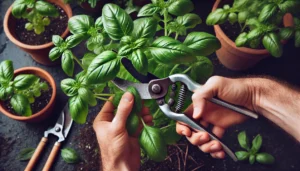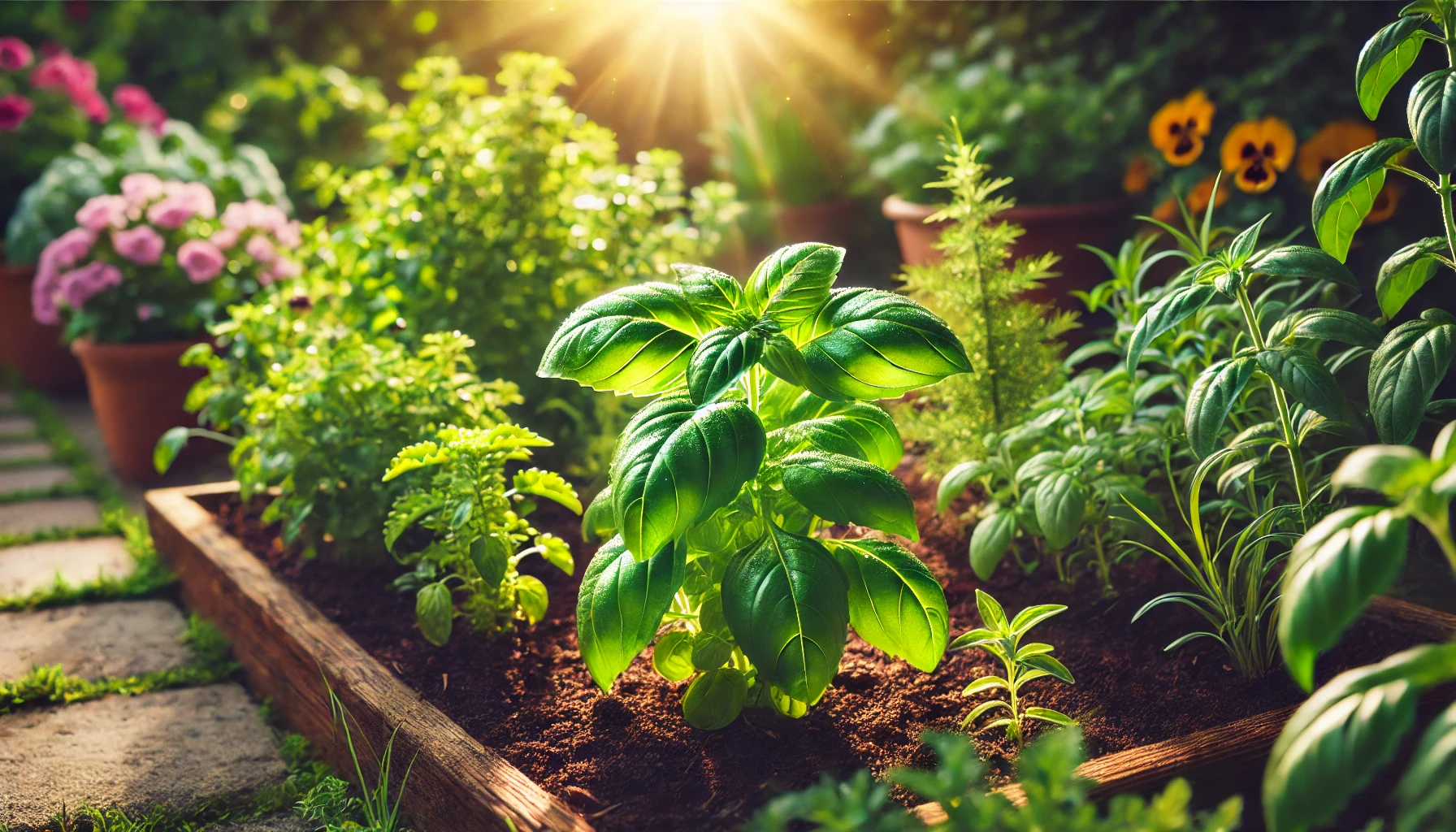How do you Maintain a Basil Plant?
Introduction
Basil is a versatile herb cherished for its aromatic leaves and numerous culinary and medicinal uses. Maintaining a healthy basil plant requires understanding its basic needs and providing consistent care. This guide covers essential tips and techniques to help you grow and sustain a thriving basil plant.
Basil Plant Care Tips
Choosing the Right Soil for Basil Plants
Basil thrives in well-draining soil rich in organic matter. The ideal soil should have a pH level between 6.0 and 7.5. Preparing the soil with compost or aged manure can enhance its fertility and drainage. Loamy soil with good drainage is best, and mixing in compost improves soil quality. It’s advisable to avoid heavy clay soils. Organic soil options include using organic potting mixes and adding worm castings or organic fertilizers.
Watering Basil Plants
Proper watering is crucial for basil’s growth. Overwatering can lead to root rot, while underwatering may cause the plant to wilt. Basil should be watered every 2-3 days in warm weather, with reduced frequency in cooler climates. Signs of overwatering include yellowing leaves and moldy soil, whereas underwatering manifests as wilted, dry leaves.

Basil Plant Sunlight Requirements
Basil loves sunlight and needs at least 6-8 hours of direct sunlight daily. Full sun exposure is best, although partial shade can be tolerated, potentially reducing growth. Indoor basil needs a sunny windowsill or grow lights, while outdoor basil should be placed in a sunny spot.
Fertilizing Basil
Fertilizing helps basil grow lush and healthy. A balanced, water-soluble fertilizer is recommended. Types of fertilizers include balanced 10-10-10 NPK fertilizer and organic options like fish emulsion or seaweed extract. Fertilizing every 4-6 weeks, following package instructions for dilution rates, is effective.
Pruning Basil Plant
Pruning encourages bushier growth and prevents the plant from becoming leggy. It promotes more leaf production and prevents flowering, which can reduce leaf flavor. Pruning involves pinching off the top sets of leaves and doing so regularly to maintain the plant’s shape.
Dealing with Pests and Diseases
Basil can attract pests and suffer from diseases. Common pests include aphids, spider mites, and whiteflies, while fungal diseases like downy mildew can also affect basil. Natural remedies such as neem oil or insecticidal soap can be used for pests, and ensuring good air circulation helps prevent mold.
Harvesting Basil Leaves
Regular harvesting keeps your basil productive and flavorful. The best time to harvest is in the morning for optimal flavor, and leaves should be picked before the plant flowers. When harvesting, cut leaves just above a leaf pair and avoid stripping more than one-third of the plant.
Basil Plant Winter Care
Basil is sensitive to cold and requires special care during winter. Preparing for winter involves bringing outdoor basil indoors before the first frost, reducing watering, and stopping fertilizing. Indoor care during colder months includes placing the plant in a sunny spot or under grow lights and maintaining a temperature above 50°F (10°C).
Best Pot for Basil Plant
Choosing the right pot ensures proper root growth and drainage. Pots should be at least 6-8 inches in diameter and can be made of terracotta or plastic with drainage holes. Using well-draining potting mix and repotting if roots become crowded are essential for optimal growth.

Temperature and Humidity Requirements
Basil prefers warm temperatures and moderate humidity. The ideal temperature range for basil is 70-80°F (21-27°C) during the day and no lower than 50°F (10°C) at night. Indoor humidity should be maintained at 40-60%, using a humidifier if necessary.
Basil Plant Growth Stages
Understanding the growth stages helps in providing appropriate care at each phase. Basil progresses from seedling (2-3 weeks after planting) to vegetative (3-5 weeks of rapid growth) to flowering (typically after 6-8 weeks). During the seedling stage, keep soil moist and provide light; during the vegetative stage, prune, fertilize, and water regularly; and during flowering, harvest leaves to delay flowering.
Organic Basil Plant Care
Organic care promotes healthier plants and a safer environment. Benefits include no harmful chemicals and enhanced soil fertility. Techniques for organic growing involve using compost and natural fertilizers, practicing crop rotation, and companion planting.
Companion Planting with Basil
Companion planting can improve basil’s growth and deter pests. Benefits include enhanced growth and natural pest control. Best companion plants for basil include tomatoes, peppers, oregano, and parsley.

Conclusion
Maintaining a basil plant involves consistent care and attention to its specific needs. By following these tips, you can enjoy a thriving basil plant that adds flavor and freshness to your dishes. Start growing basil today and experience the joy of homegrown herbs!
Table: Quick Reference for Basil Plant Care
| Care Aspect | Details |
|---|---|
| Soil | Well-draining, pH 6.0-7.5, mix compost |
| Watering | Every 2-3 days, reduce in cooler climates |
| Sunlight | 6-8 hours of direct sunlight |
| Fertilizing | Balanced 10-10-10 NPK, every 4-6 weeks |
| Pruning | Pinch off top sets of leaves regularly |
| Pests and Diseases | Neem oil for pests, good air circulation |
| Harvesting | Morning harvest, cut above leaf pair |
| Winter Care | Bring indoors before frost, sunny spot |
| Pot Size | 6-8 inches in diameter, drainage holes |
| Temperature | 70-80°F day, above 50°F night |
| Humidity | Maintain 40-60% indoors |
| Growth Stages | Seedling, vegetative, flowering |
| Organic Care | Use compost, natural fertilizers |
| Companion Planting | Tomatoes, peppers, oregano, parsley |
